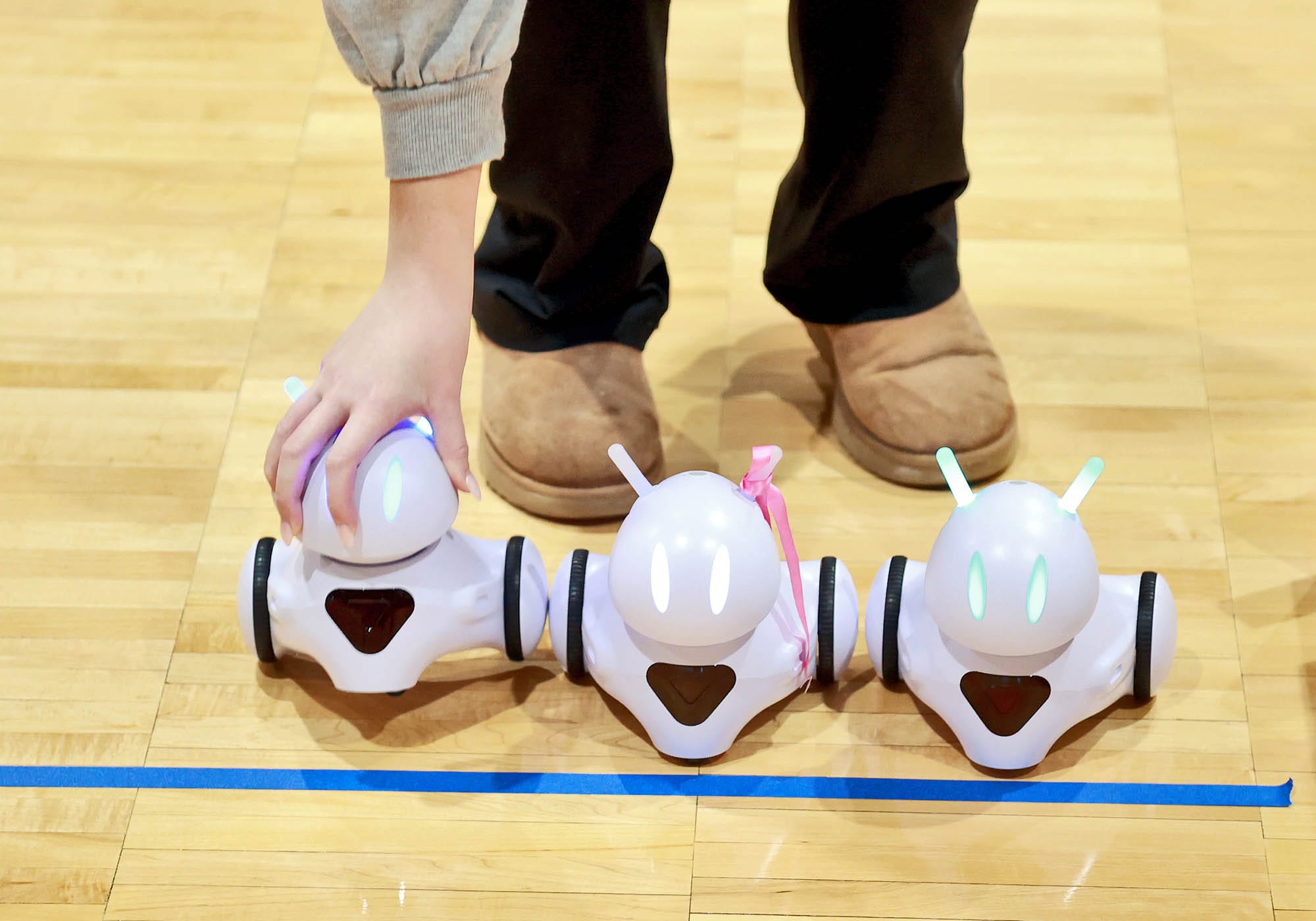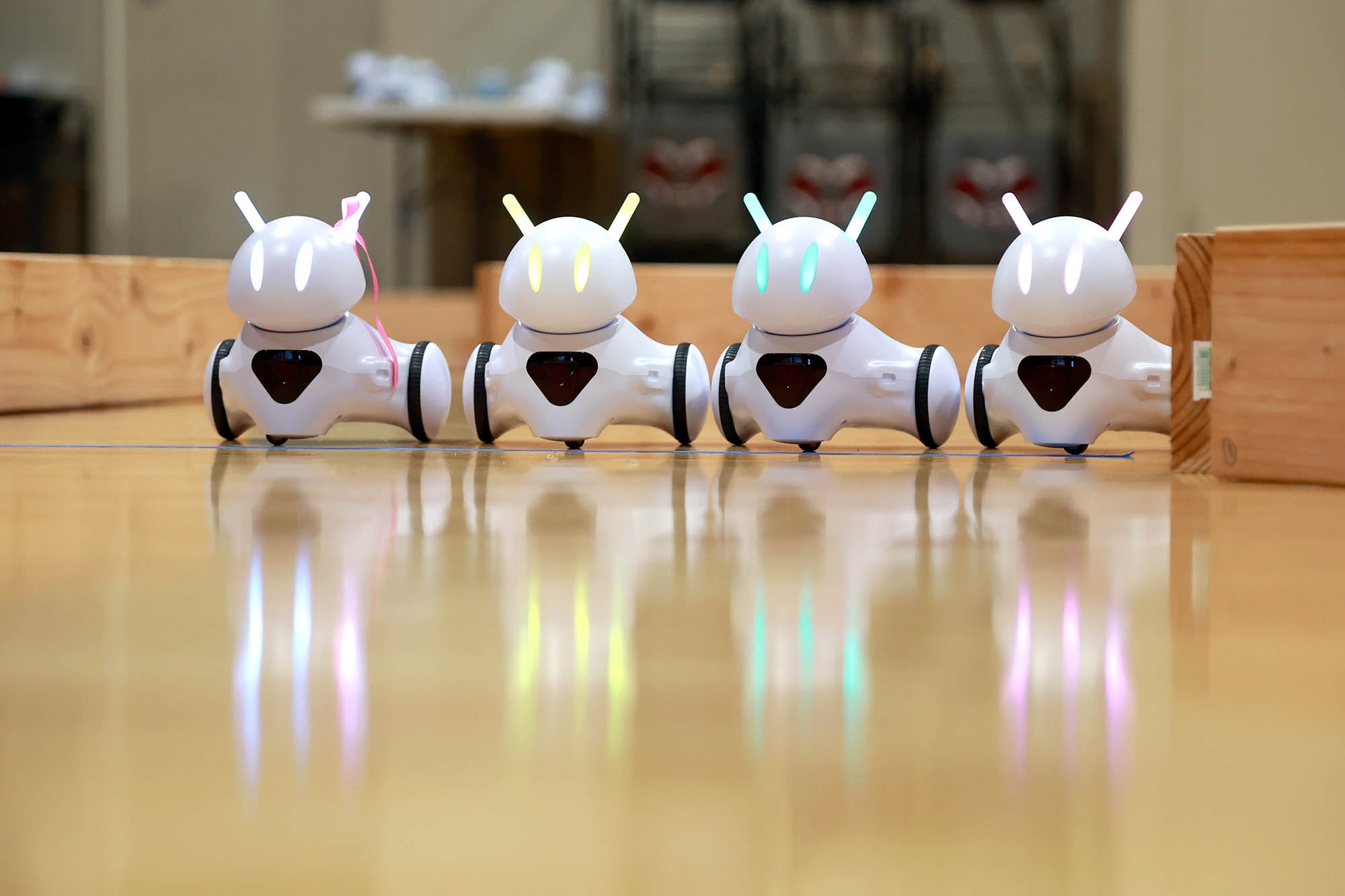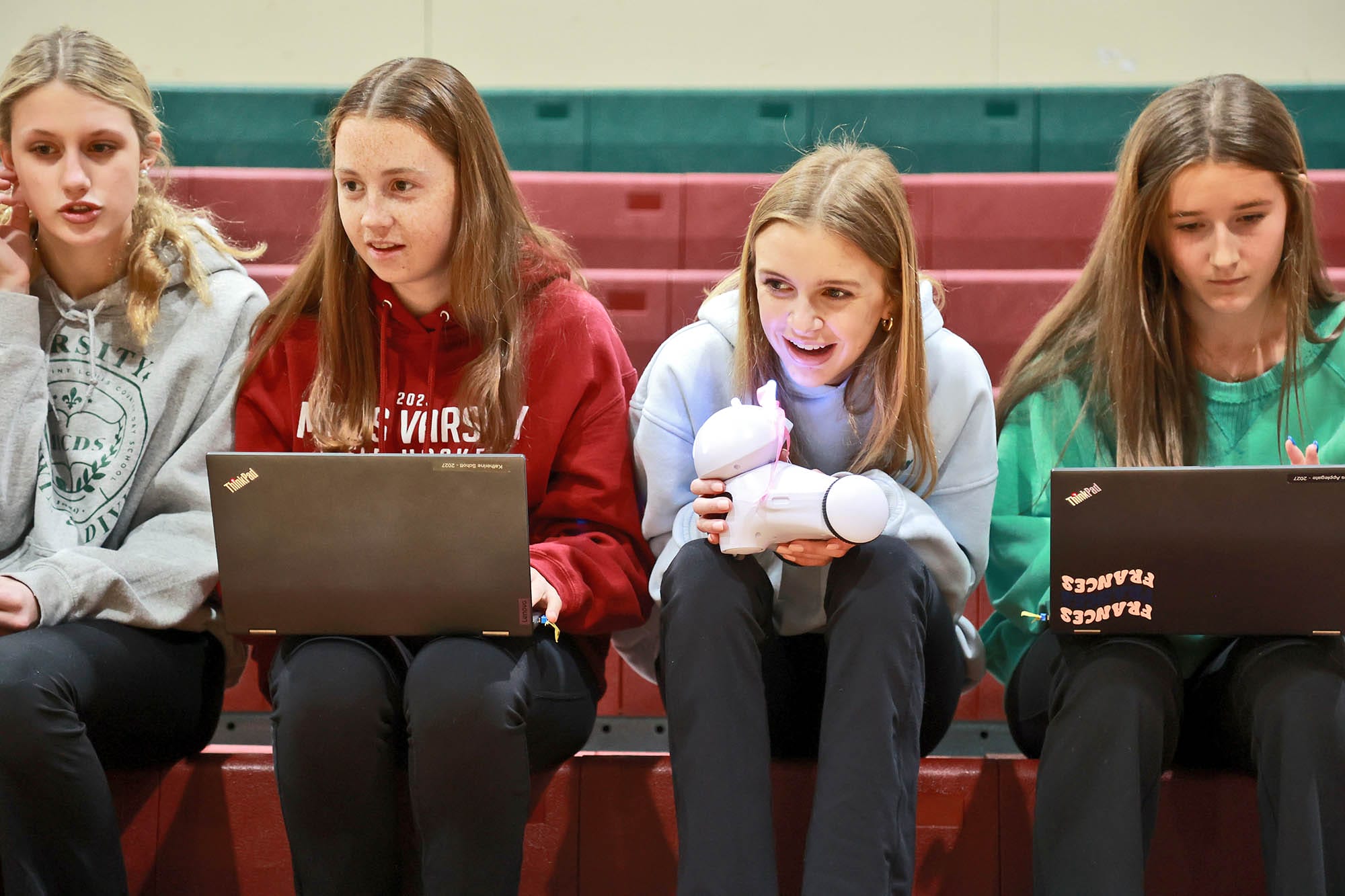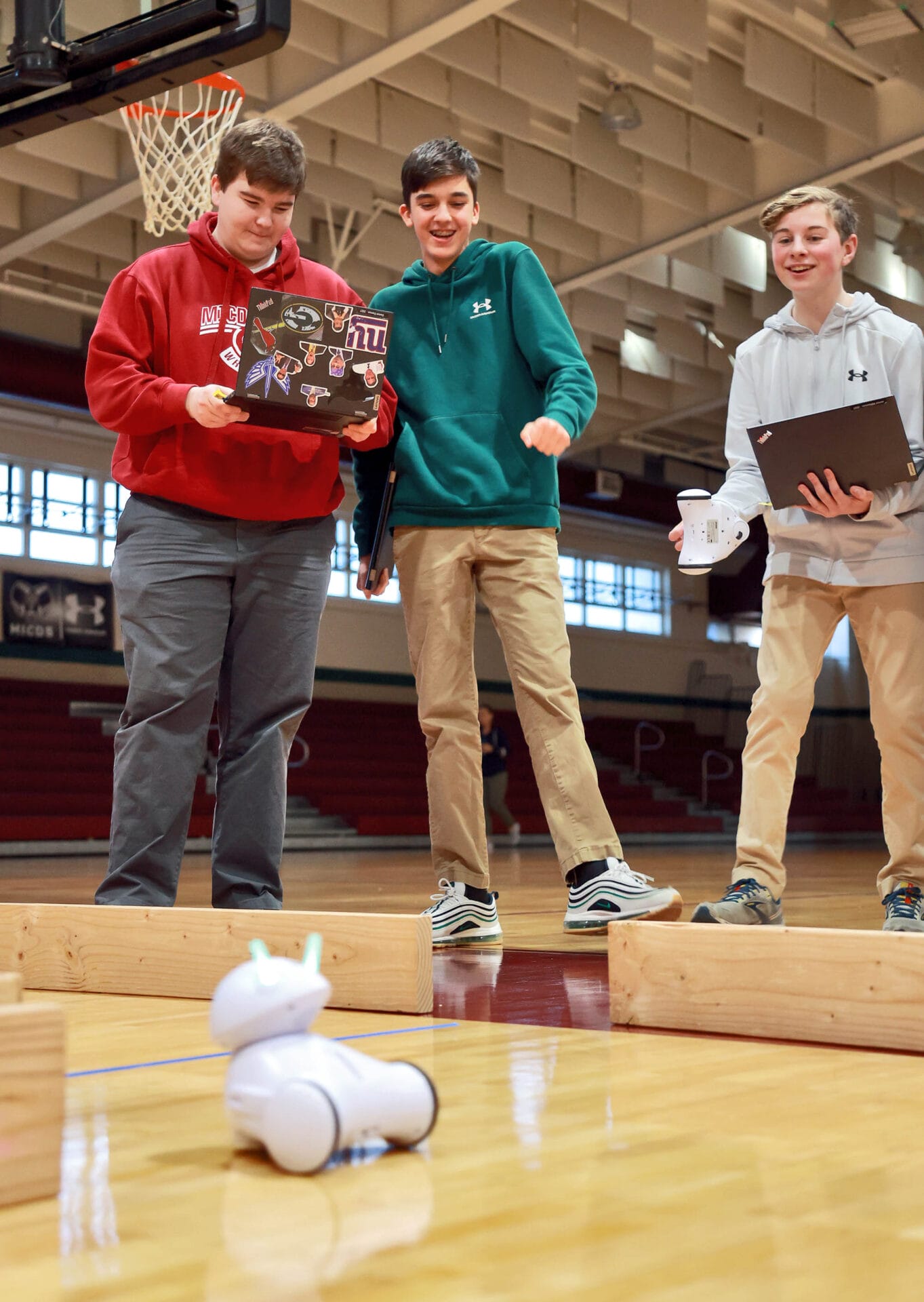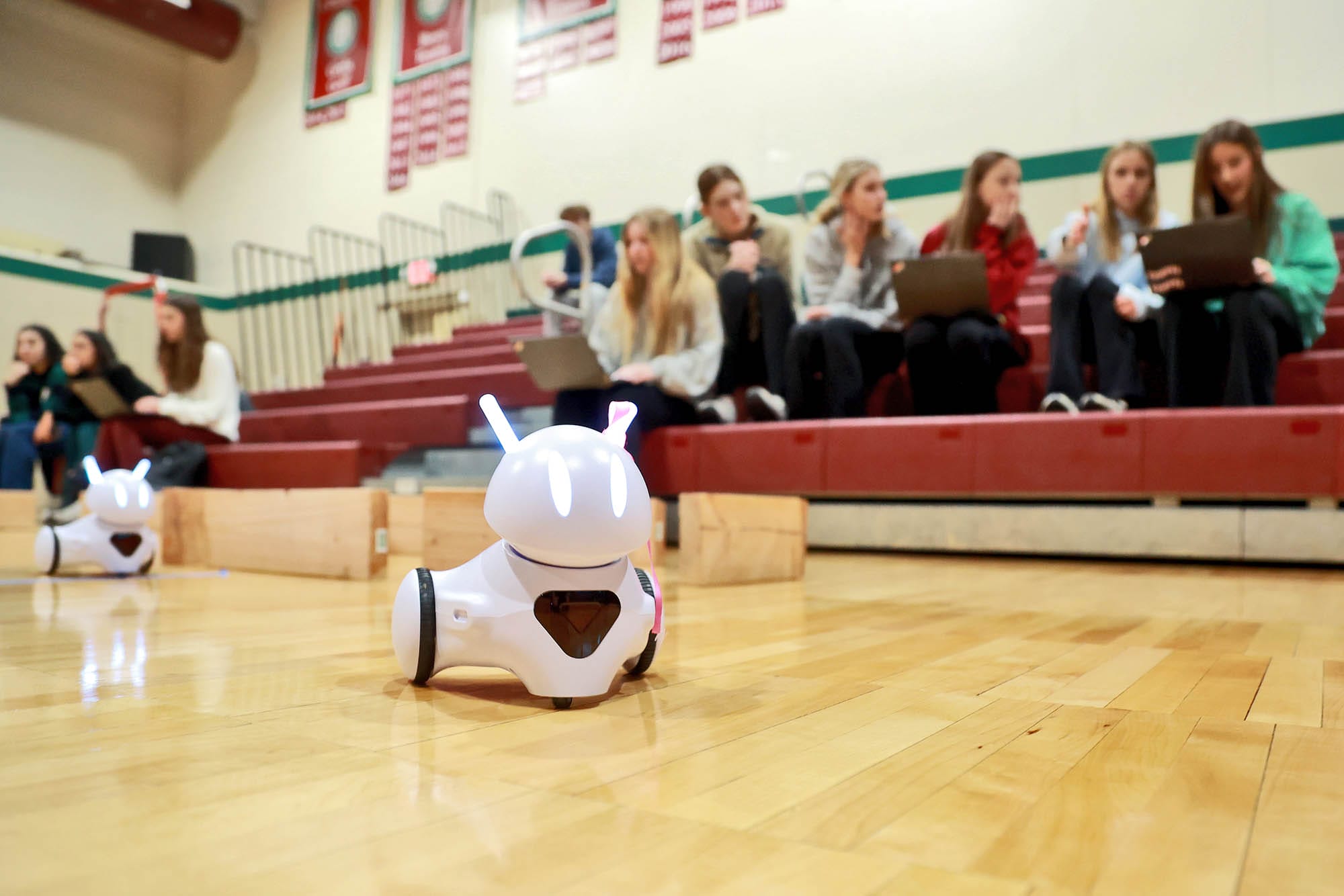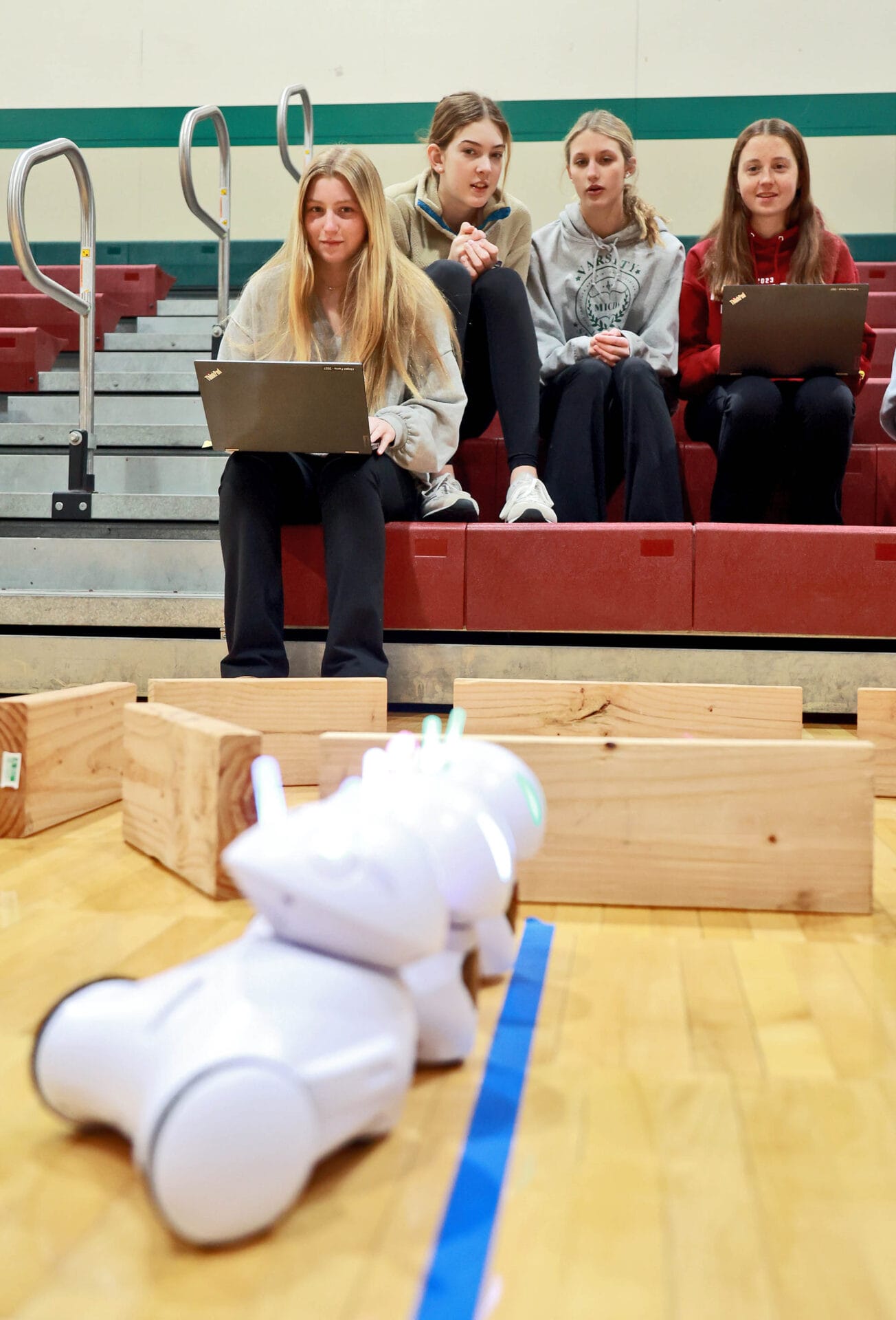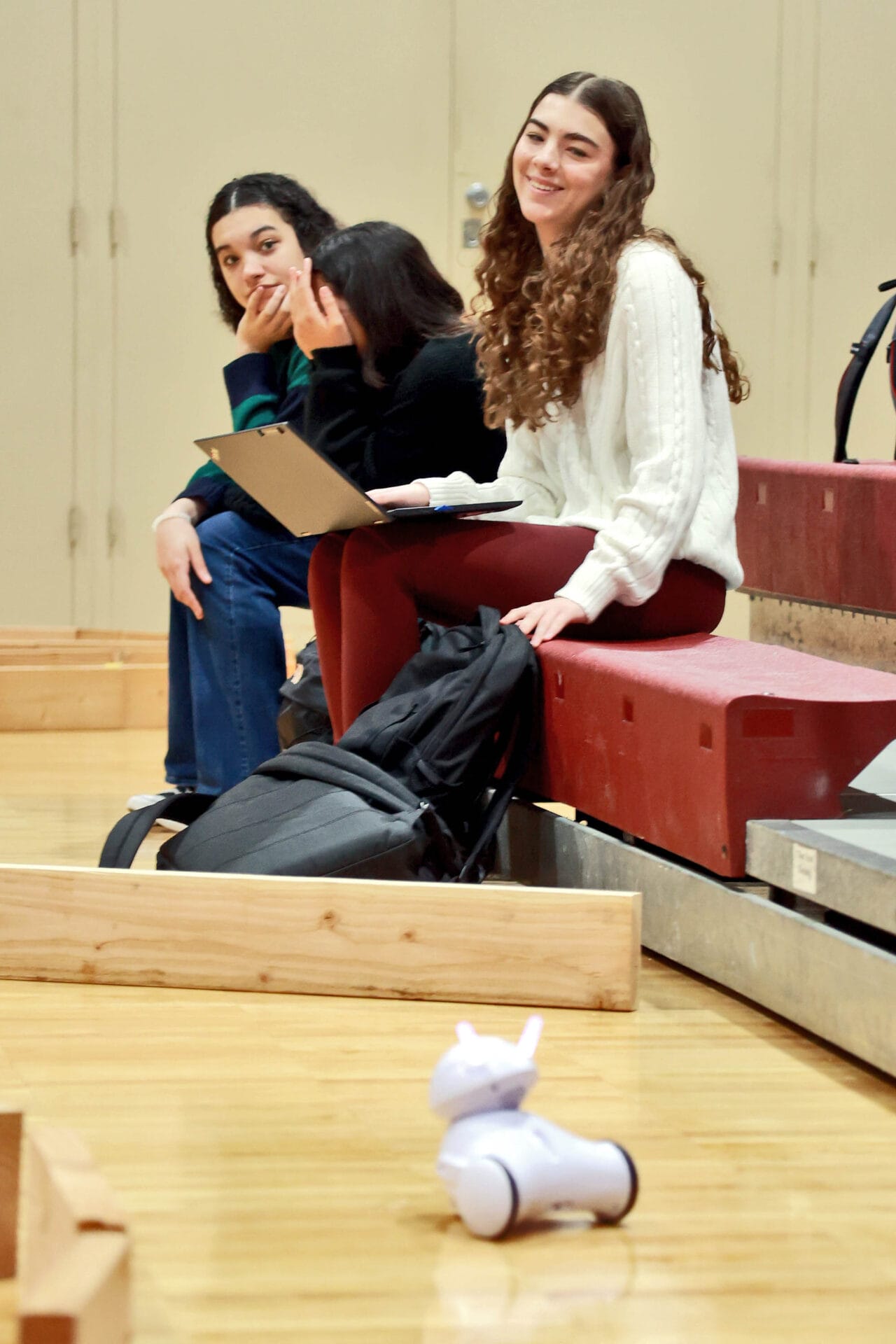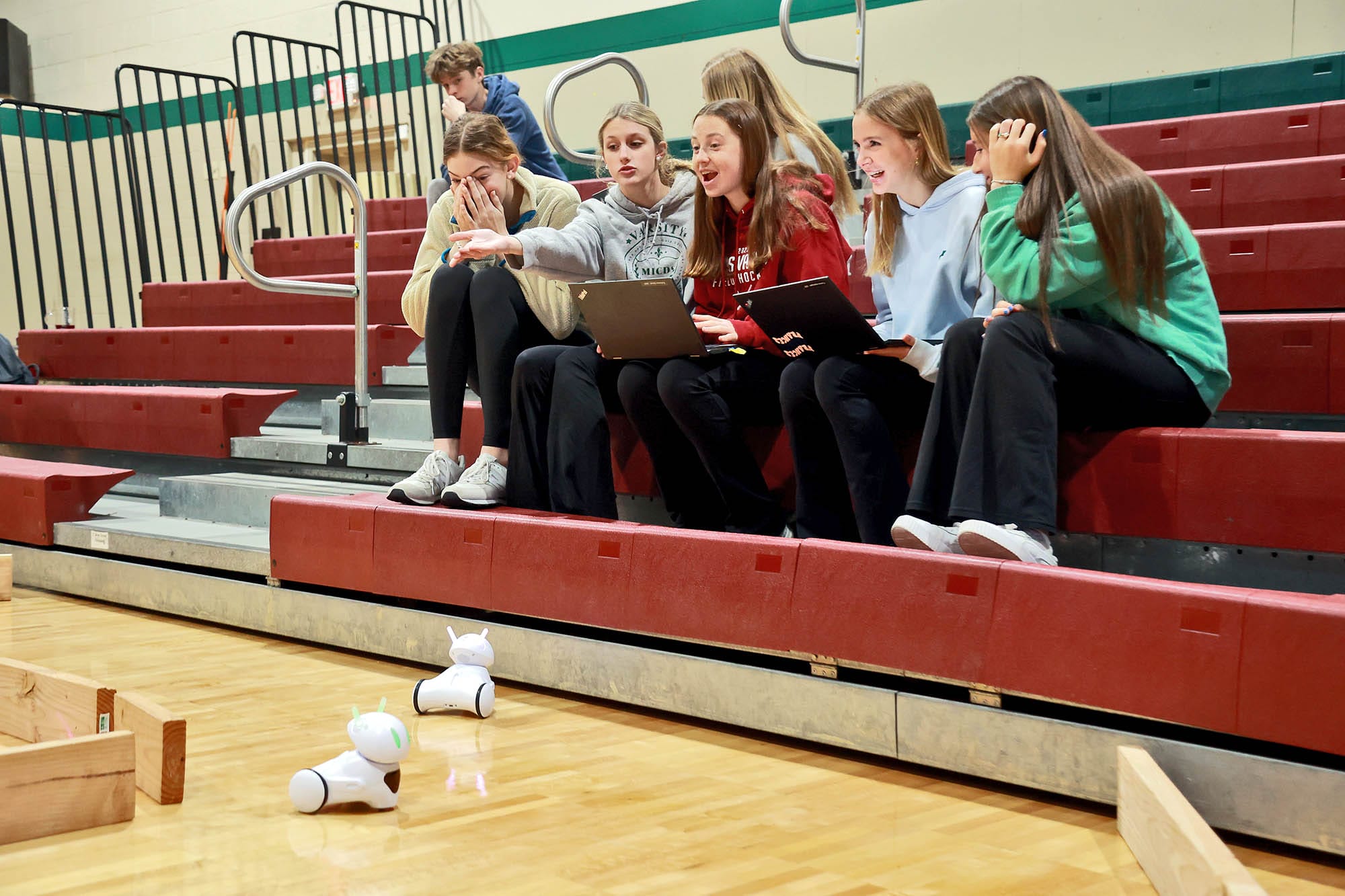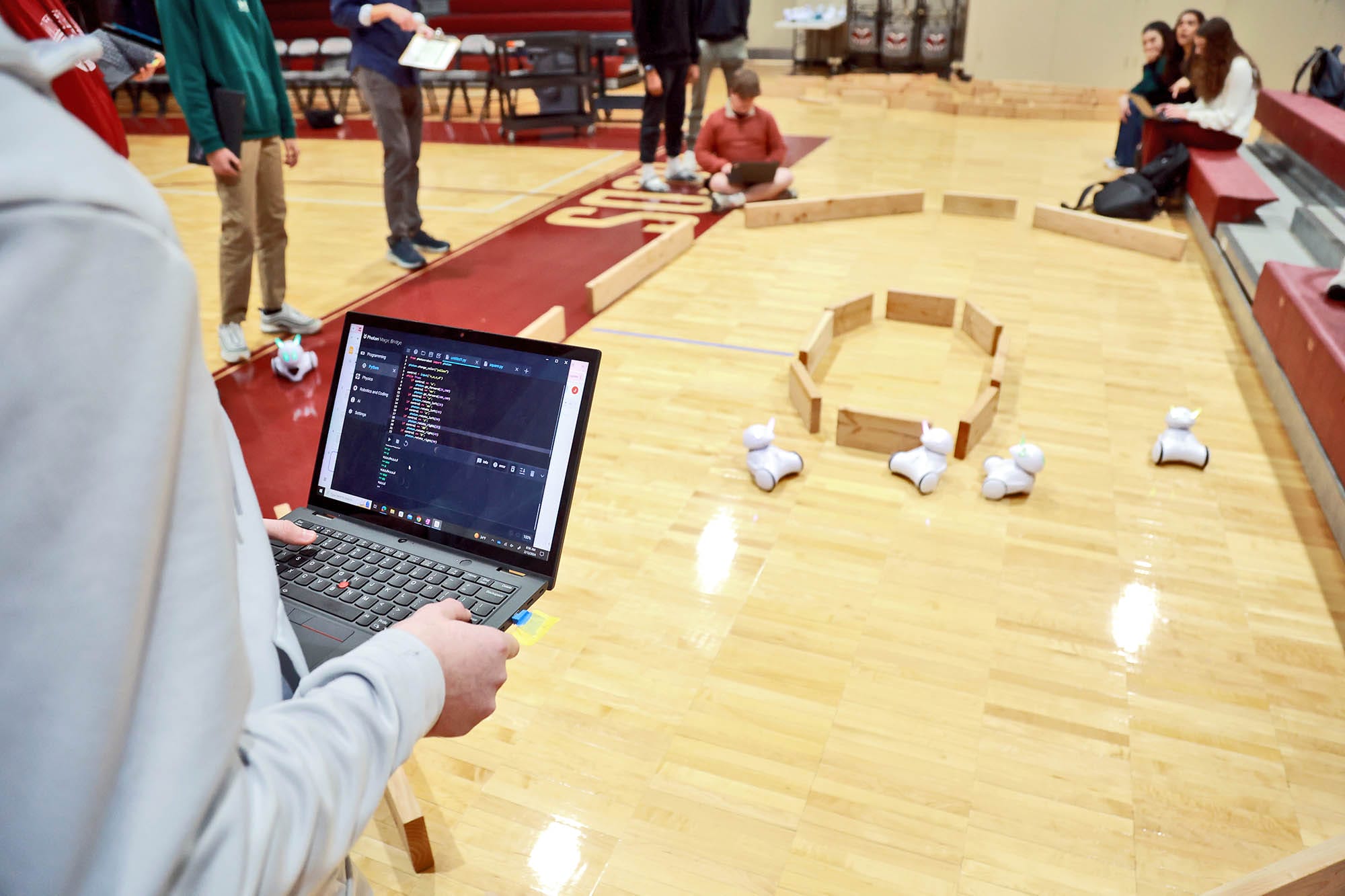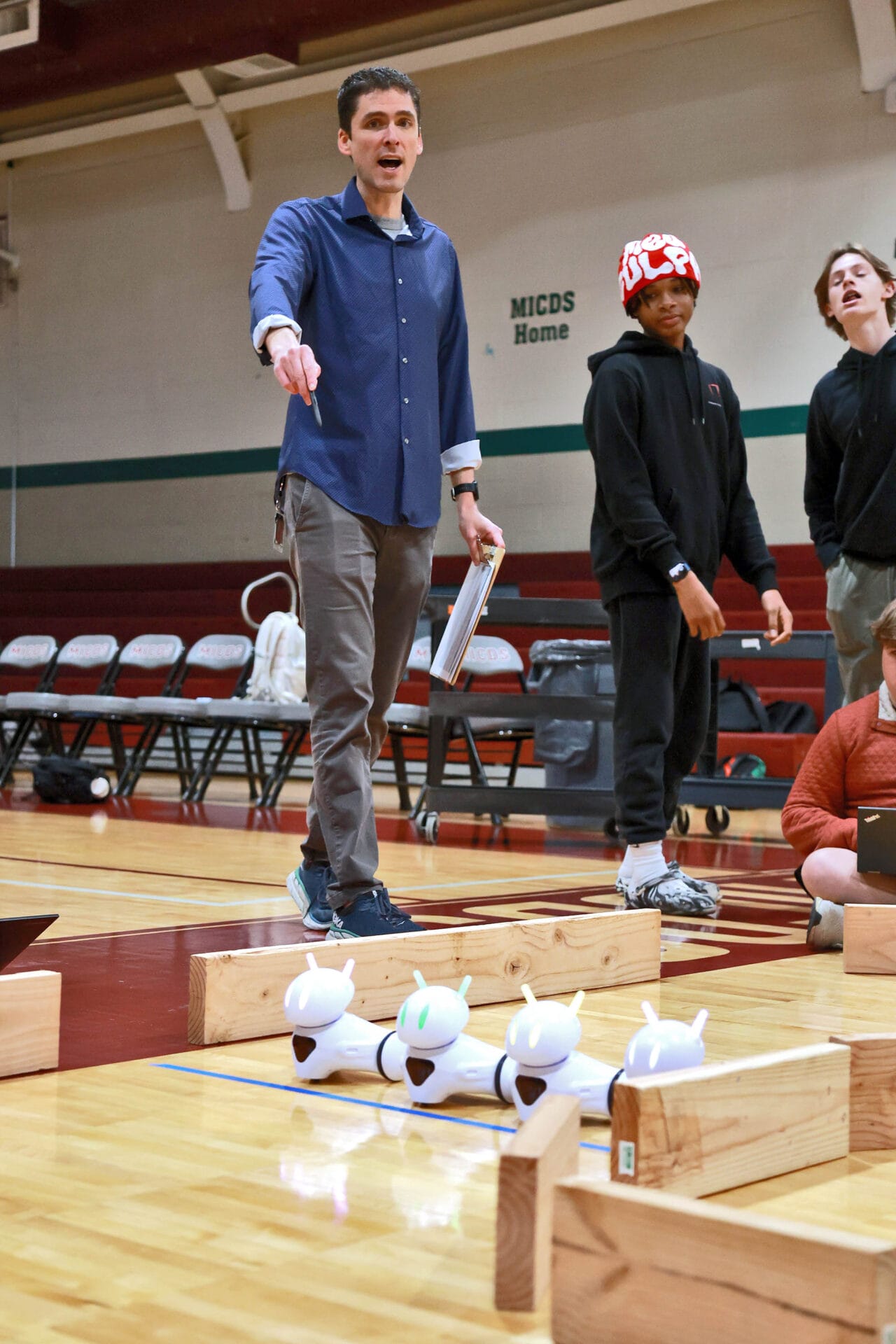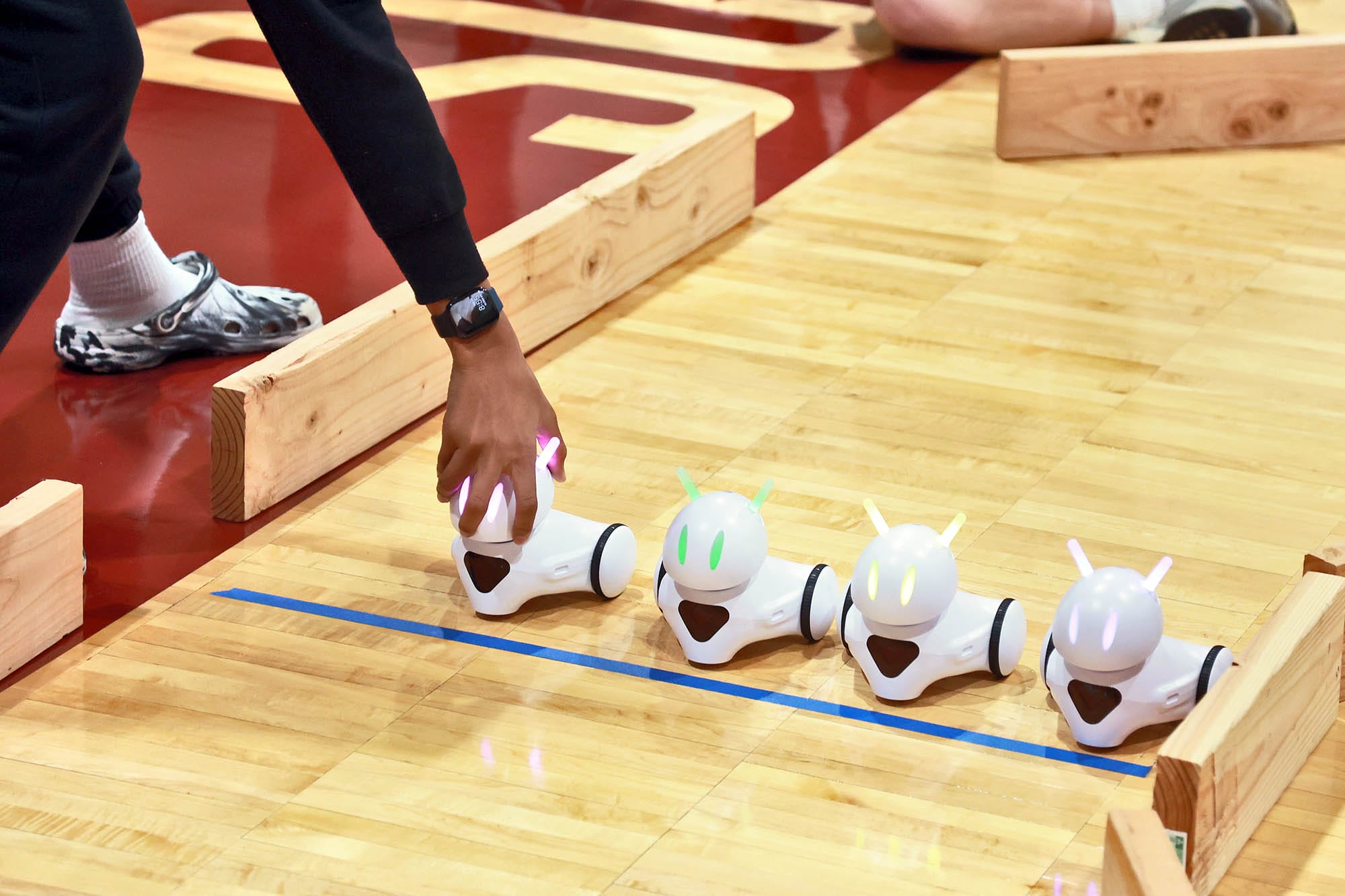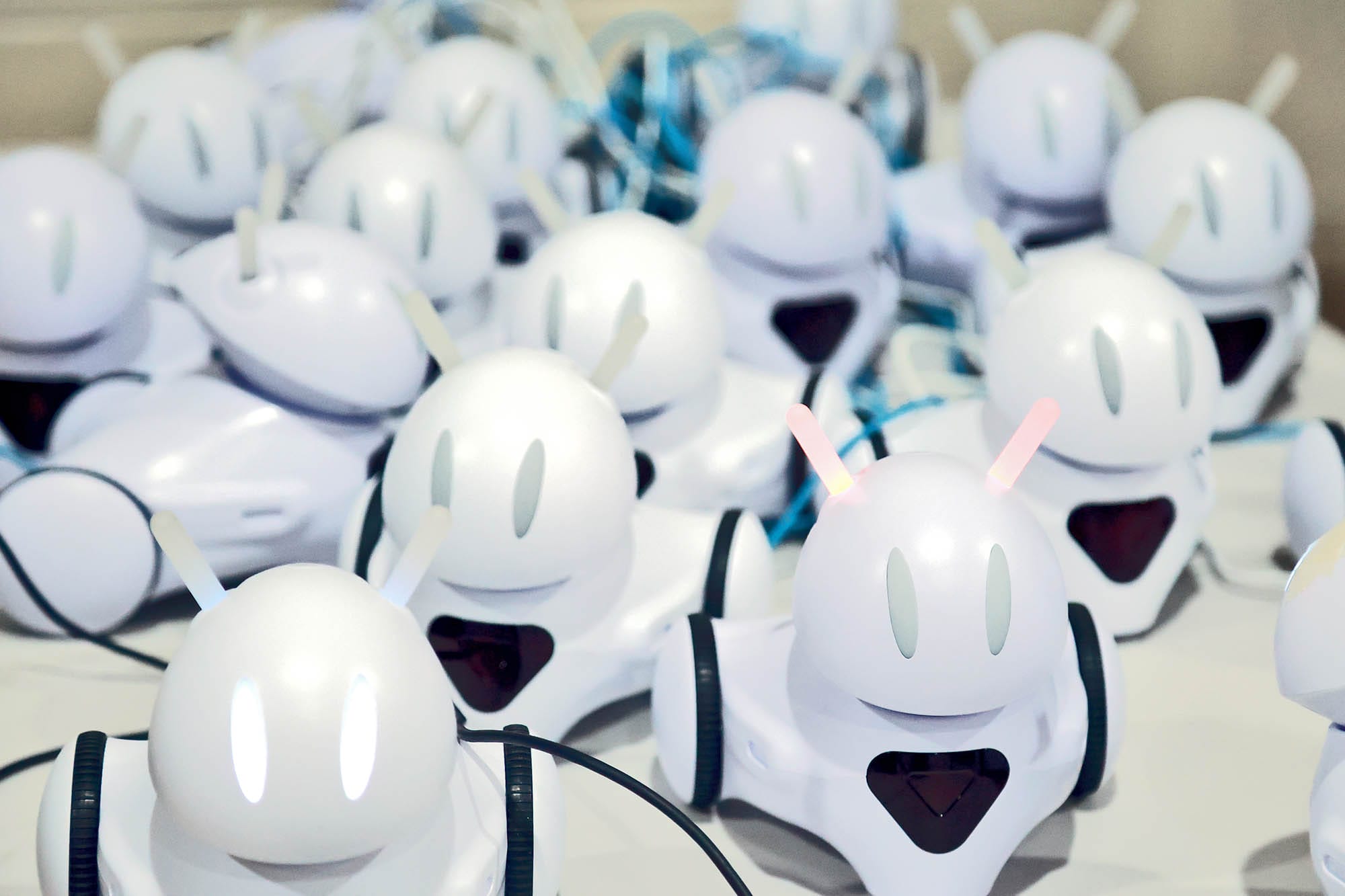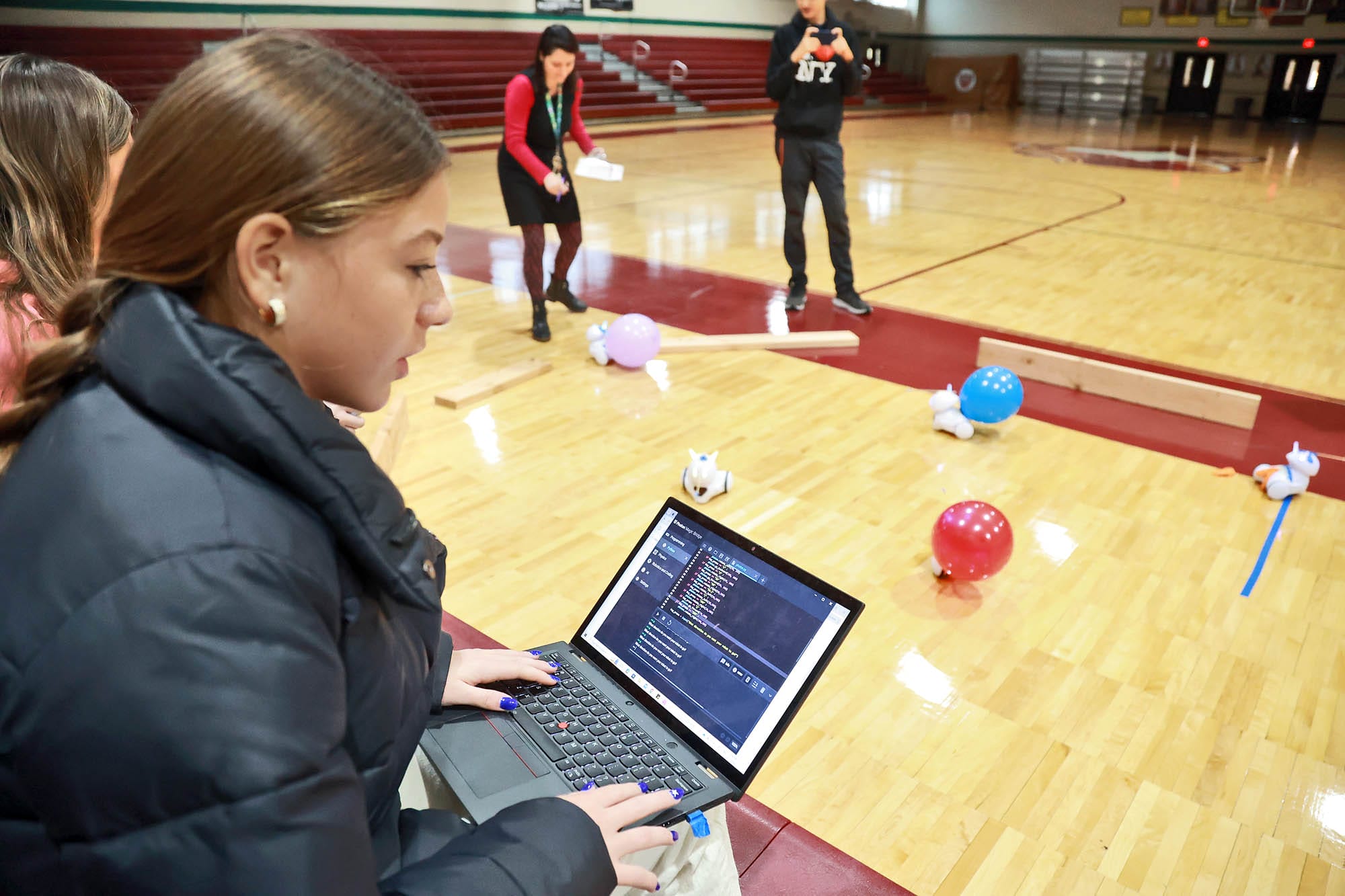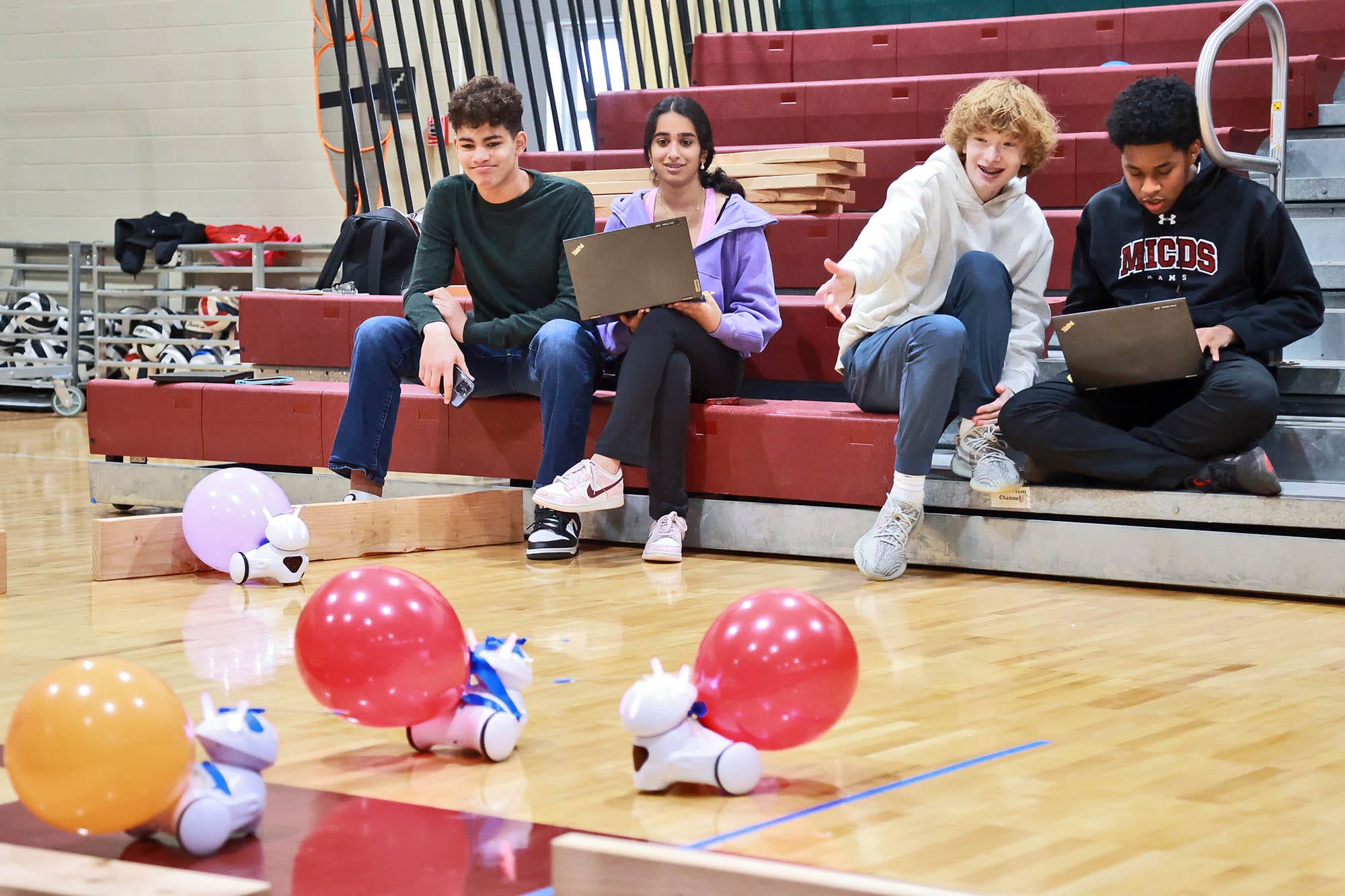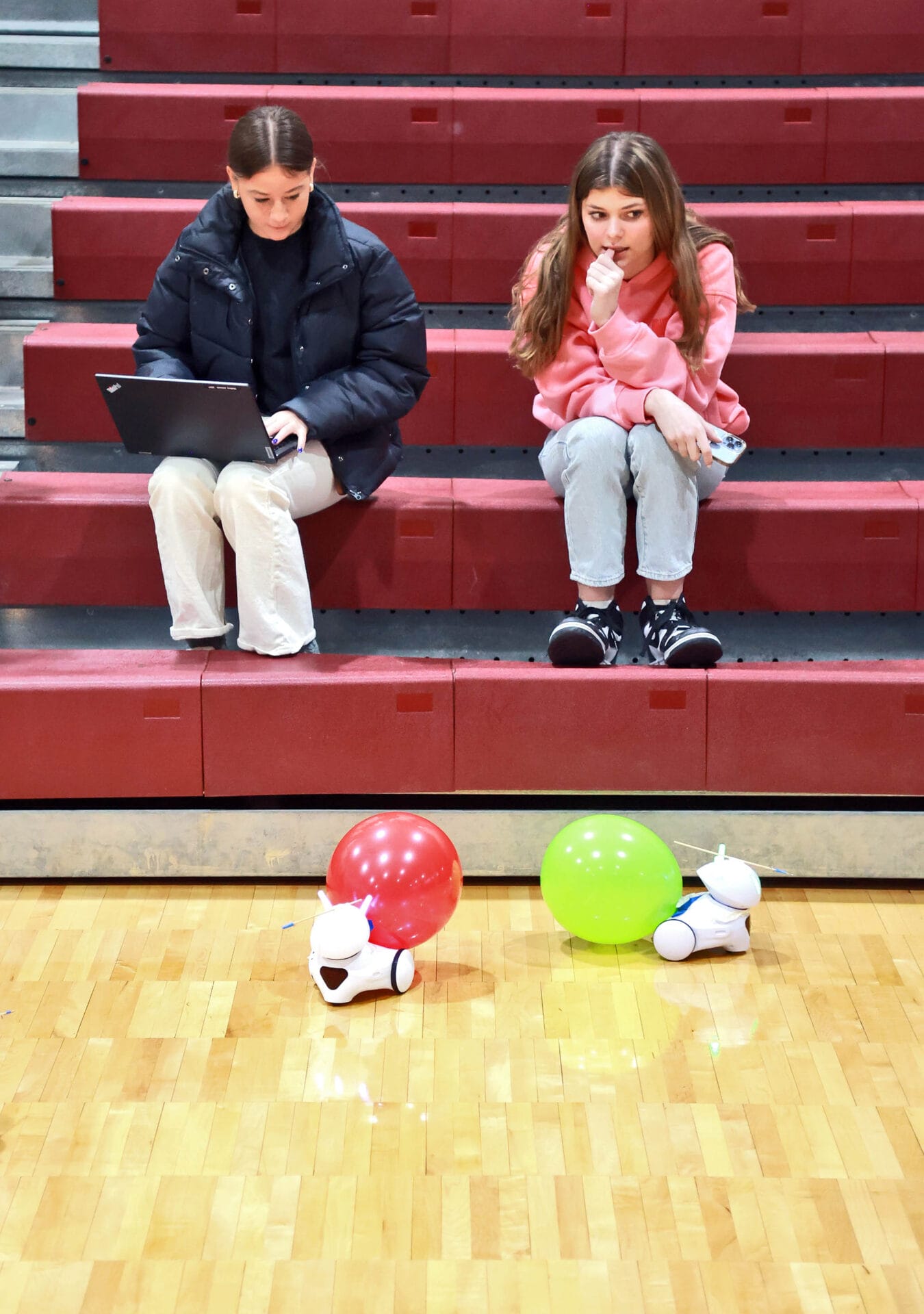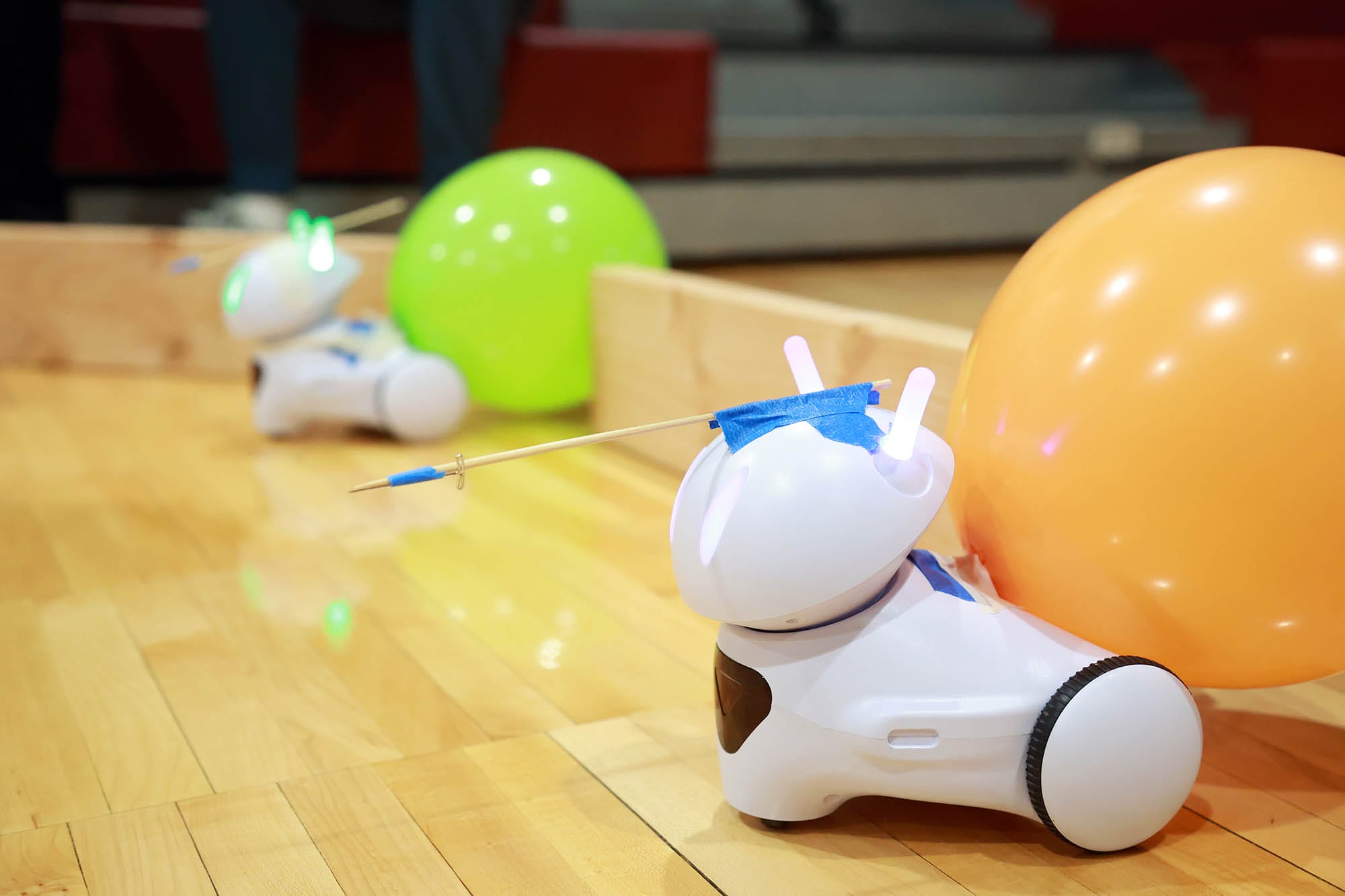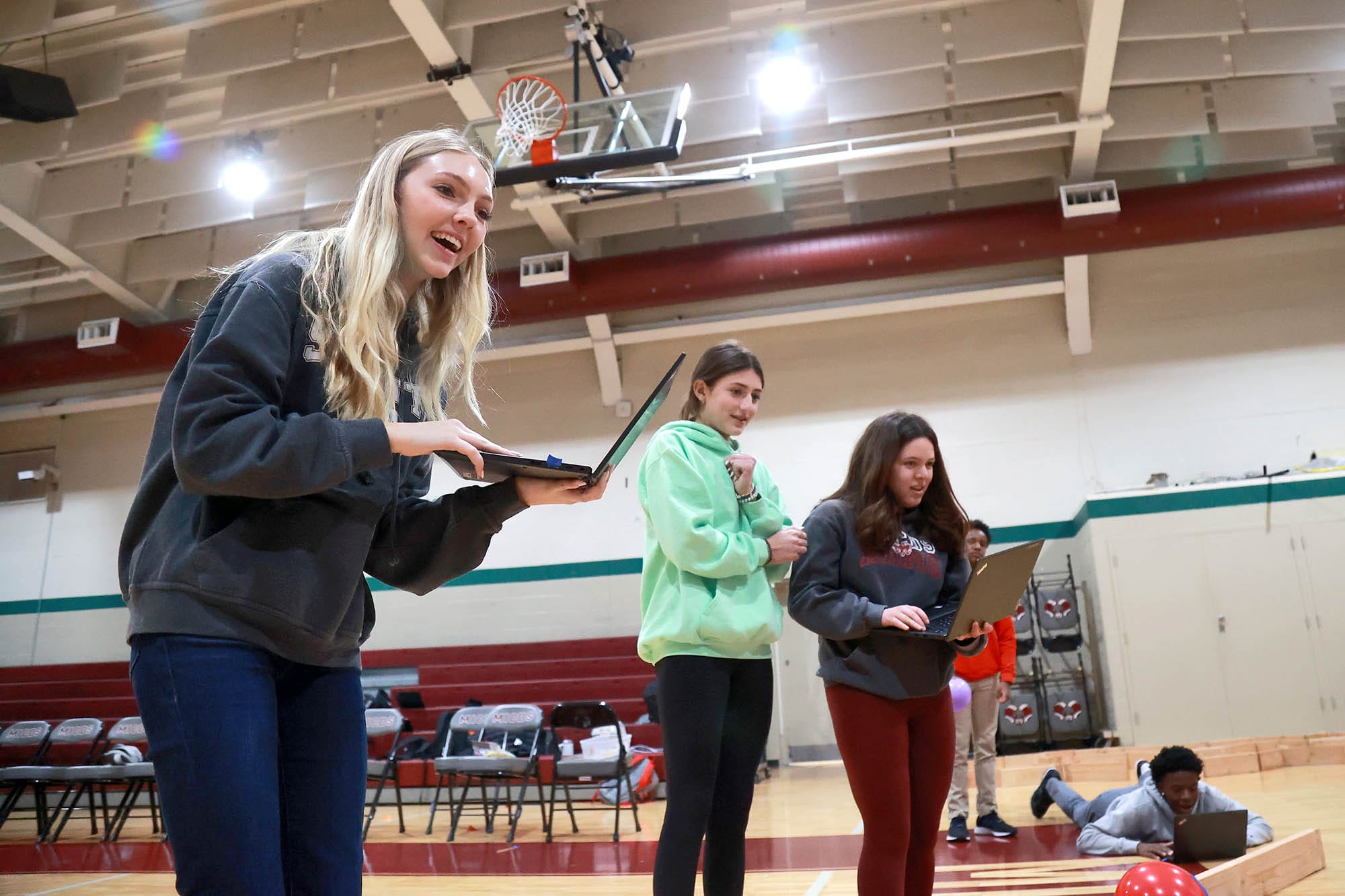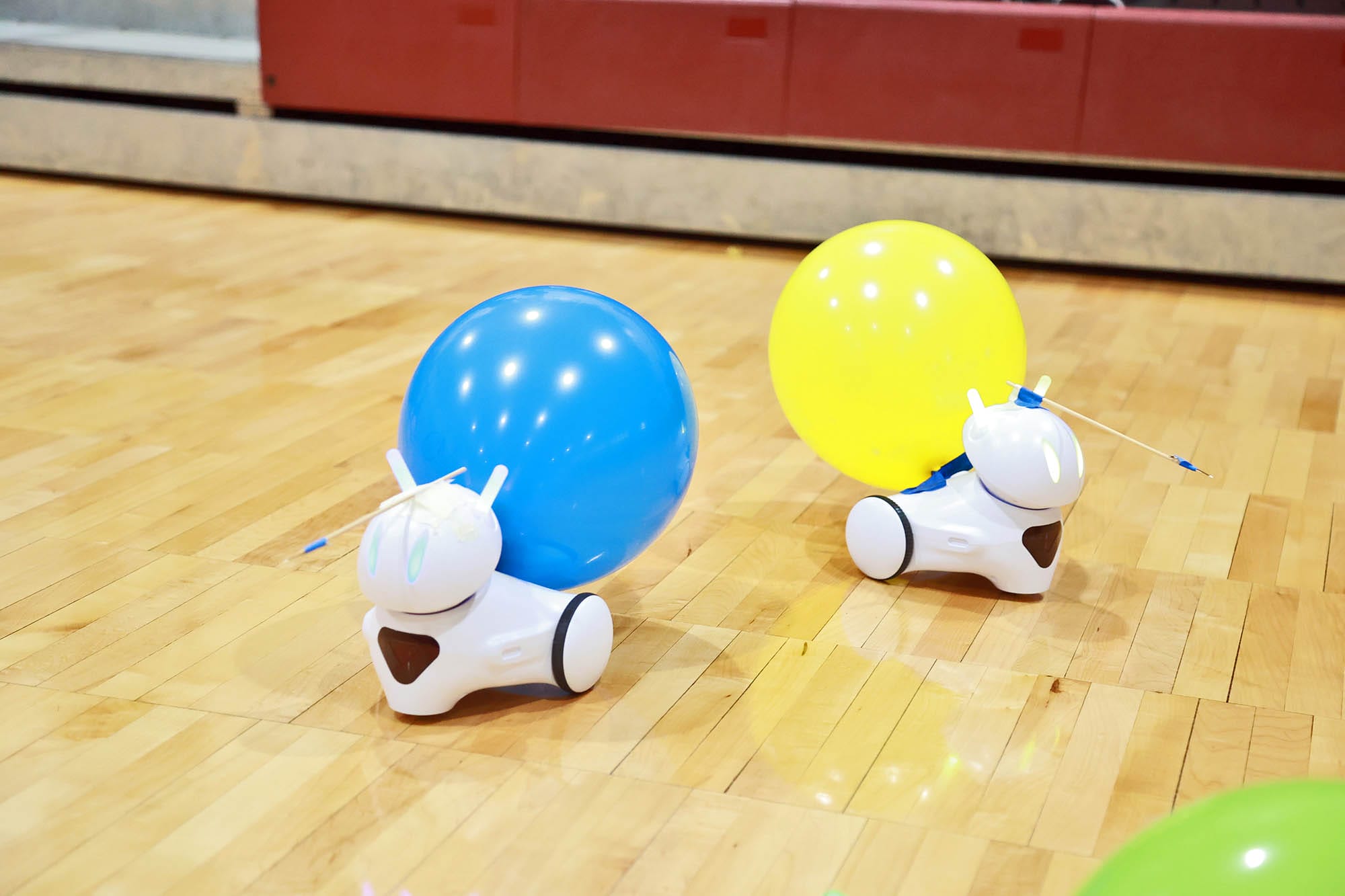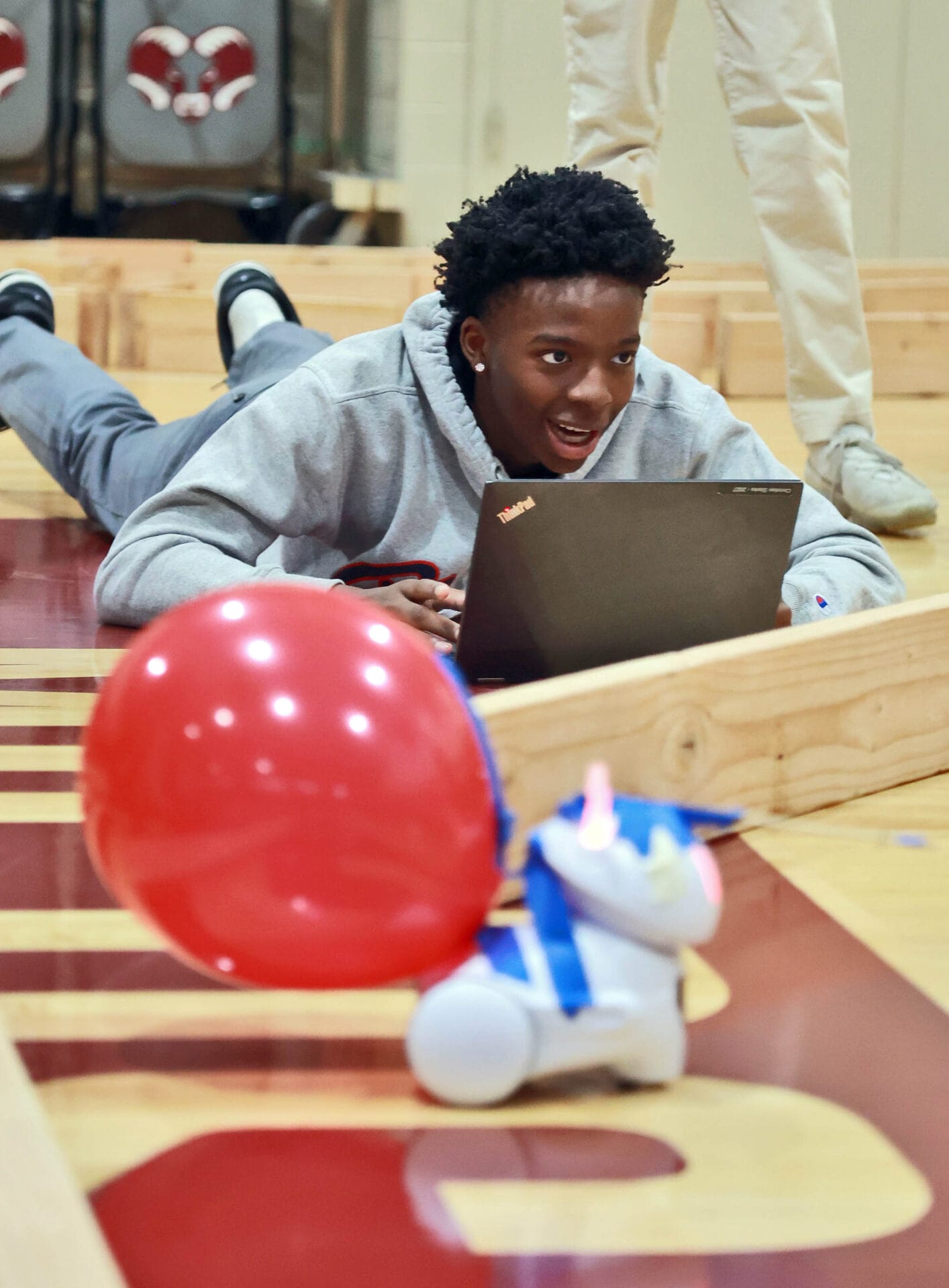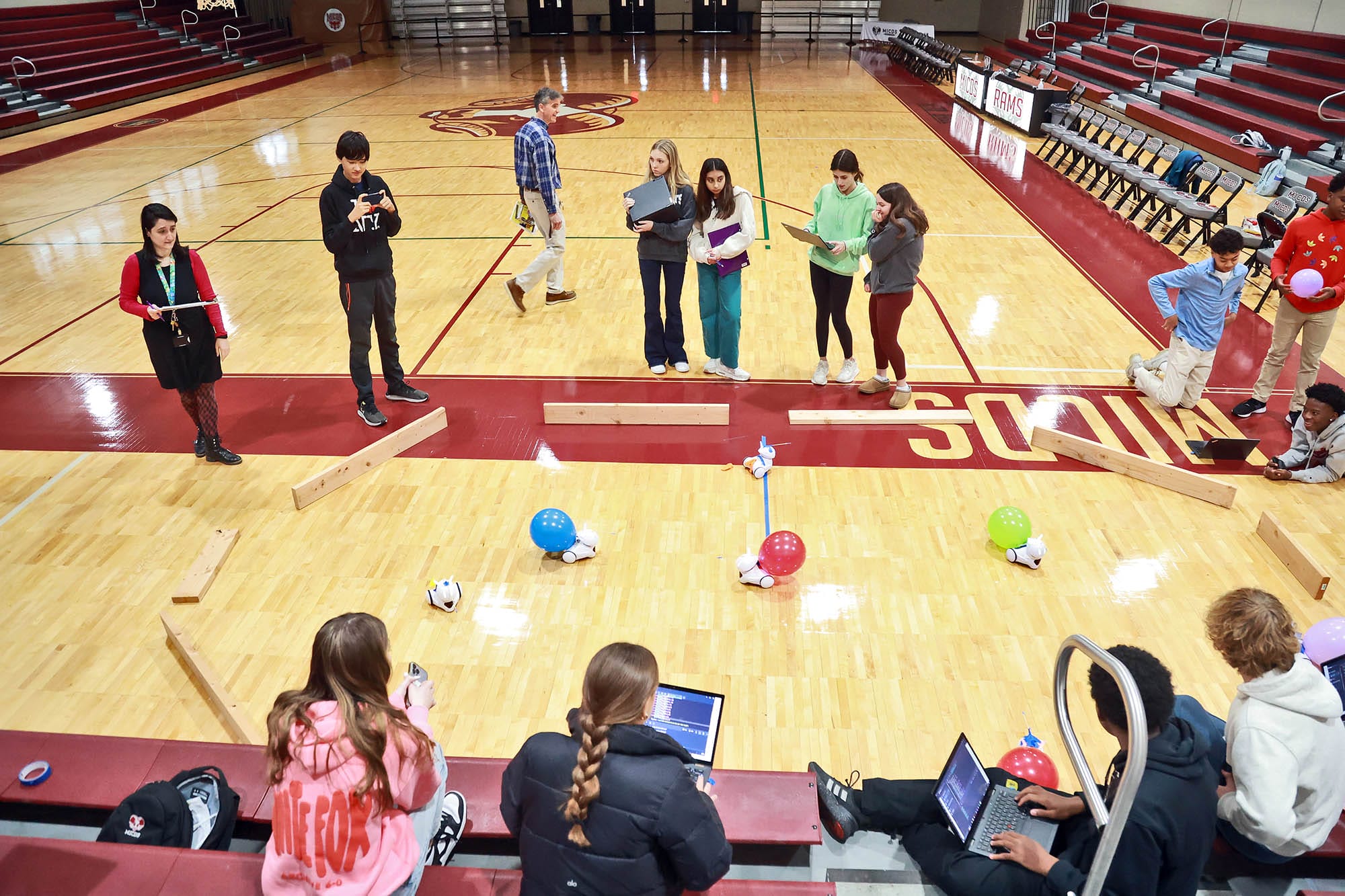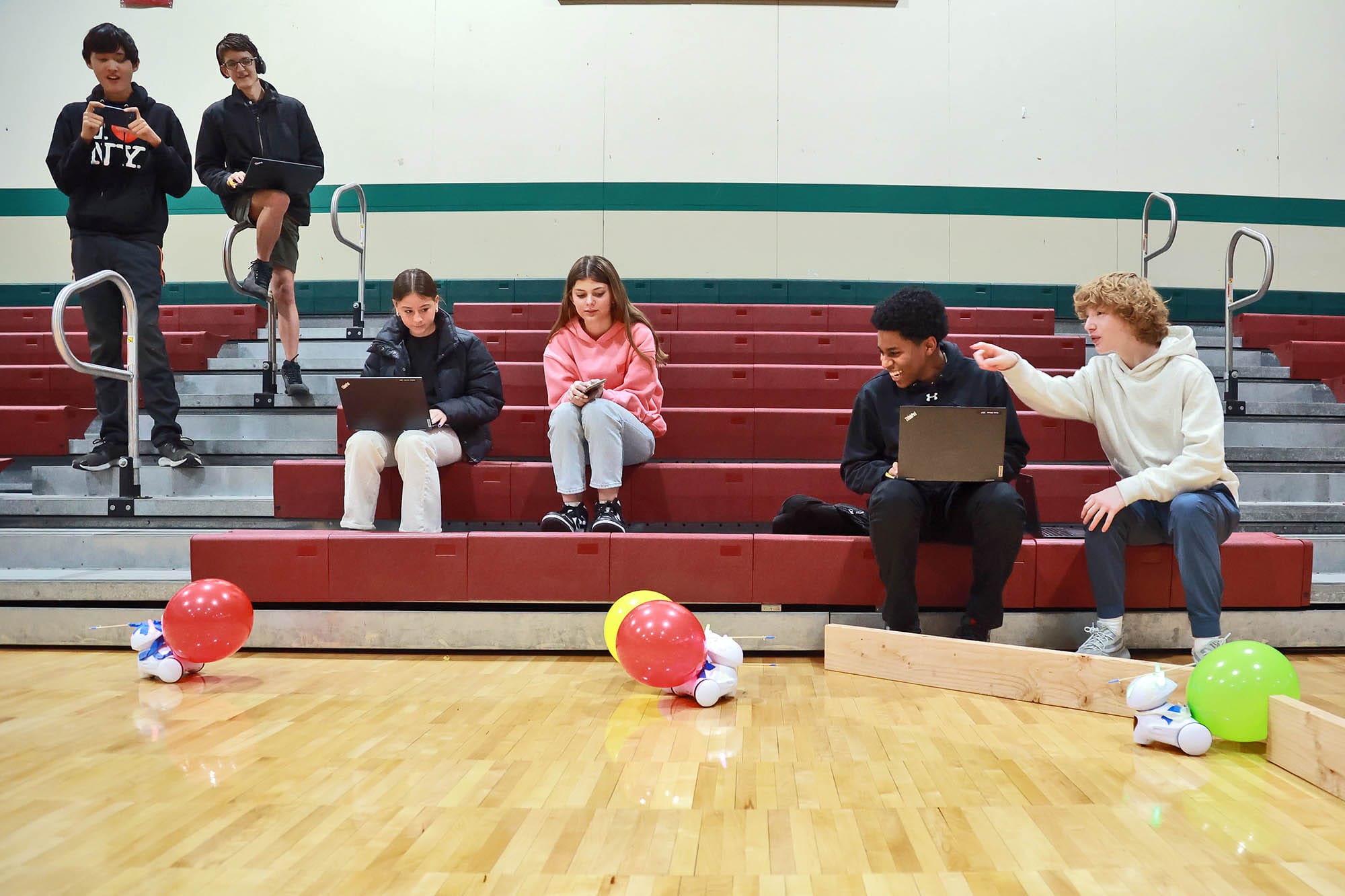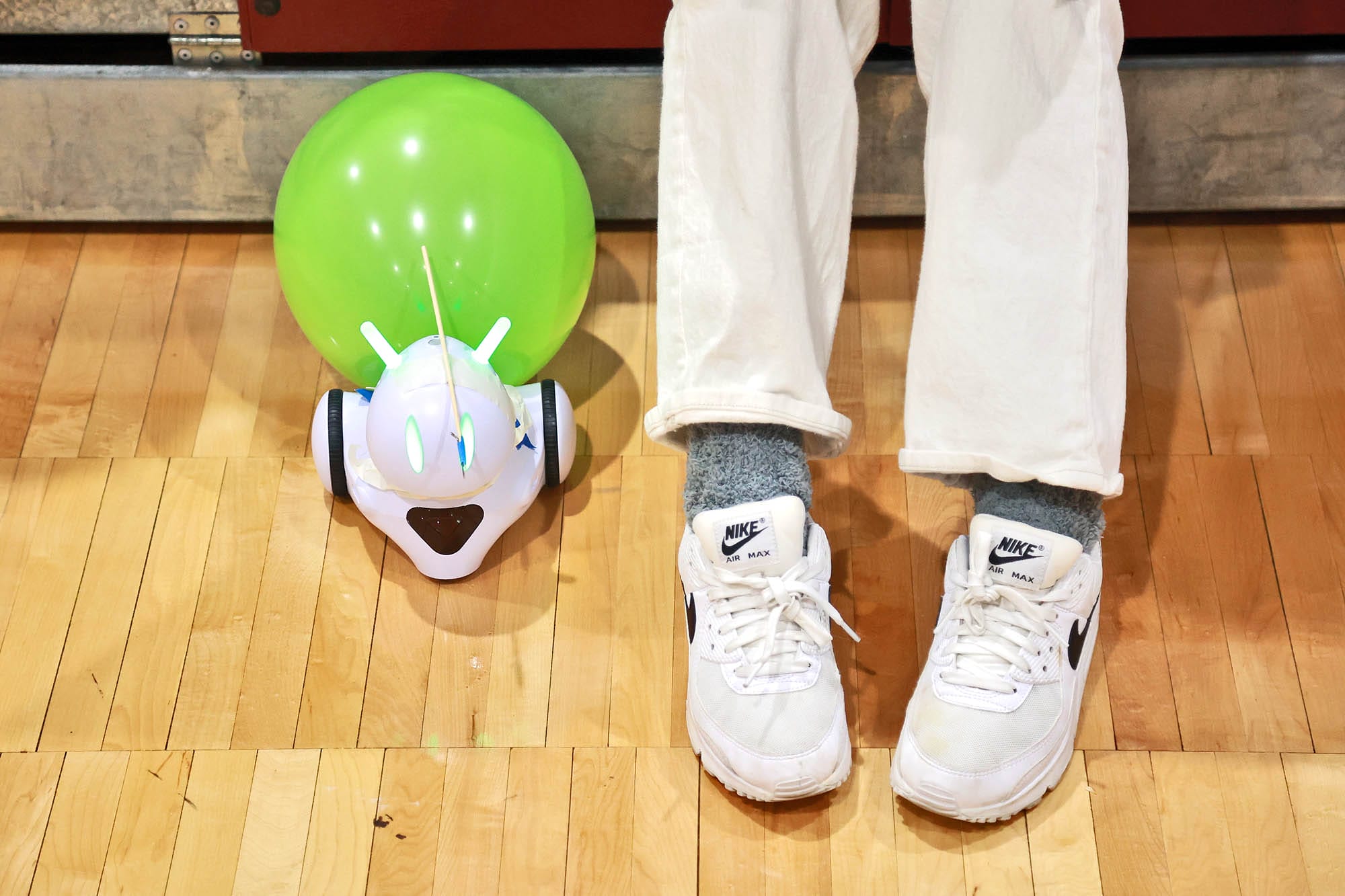Somewhere between Luke Skywalker’s circuit board sidekick, R2-D2, and the Jetson’s robot maid, Rosey, you’ll find the almost-cuddly Photon robots that have been keeping Upper School students company this week. Freshman in the Chemical and Physical Systems class, working with Upper School Science Teachers Andi Galluppi, Brian Coco, and Brian Rueckert, have been using the robots to learn the basics of computer coding.
Using the computer language Python, students can program the robots to do a variety of things. “Working with the Photons lets students apply their coding skills to something that moves, changes color, and makes noise” says Galluppi. As students learn how their coding instructs the Photon robots, they get better at programing them to interact with and compete against their classmates’ robots. In one lesson students competed in a jousting match, attaching balloons to their robots and then orchestrating the robot movements to pop each others balloons. The exercise is fun and, Gallupi adds, “It helps them show off what they’ve accomplished to their peers.”
Like learning a foreign language, learning to code can be difficult. But without someone to have a conversation with, learning a new computer language can be like talking to yourself. That is why the Photon robots are so important. Programing the robots gives students a tangible result and provides feedback they would not get from a virtual simulation. “It’s more dynamic than running code in a client” explains Galluppi. The real-world effects of the coding could be seen on the students’ faces as they struggled and laughed while programing their robots to carry out specific instructions. “When students are enjoying themselves they are more likely to buy into every step of whatever activity we’re doing and to practice the material” Galluppi says. “This is particularly important in coding, since the best way to learn is by doing. It takes a lot of resilience. You’re going to make a lot of mistakes and have to fix them. Having fun with the process itself and being excited about the outcome helps students work through challenges as they arise.”
That hard work pays off for students, and is rewarding for Galluppi. “I love watching the students get so excited and proud of themselves when they have a vision for what they want the robot to do and then make it happen. I’m very proud of them.”
